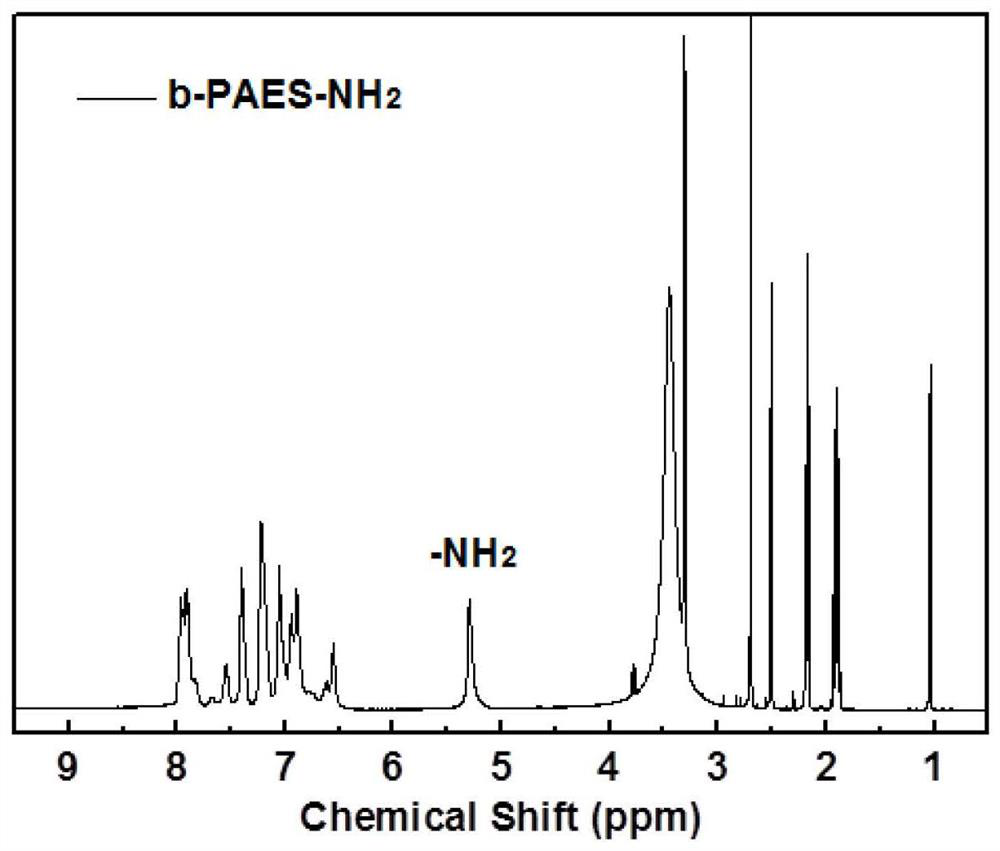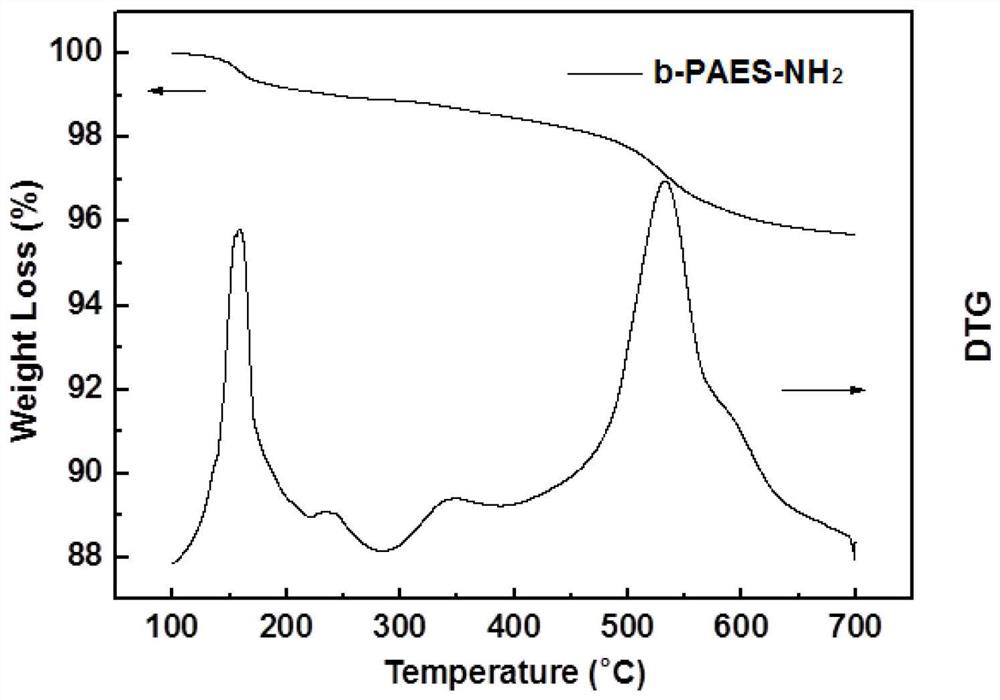A solvent-resistant composite nanofiltration membrane and preparation method thereof
A composite nanofiltration membrane and solvent-resistant technology, which is applied in the direction of chemical instruments and methods, membranes, membrane technology, etc., can solve the problems of few composite structure solvent-resistant nanofiltration membranes and performance needs to be further improved, and achieve the goal of improving chemical stability Effect
- Summary
- Abstract
- Description
- Claims
- Application Information
AI Technical Summary
Problems solved by technology
Method used
Image
Examples
Embodiment 1
[0042] (1) Dissolution of Kevlar polyamide nanofibers
[0043]Dissolve 2.0 g of strong base KOH in 40 g of a mixed solvent of dimethylsulfoxide (DMSO):water (40:1 by volume). Take 2.0 grams of Kevlar nanofibers and add them to the above solution, and then mechanically stir at room temperature for 2 weeks to destroy a large number of hydrogen bonds between the carbonyl and amide groups between the molecules until the color becomes a uniform dark red Kevlar nanofiber solution. The obtained Kevlar nanofiber solution was left to stand for 30 days to further hydrolyze the amide into short polymer chain segments, and the length of the molecular chain segments was tested to be 10-60 nm.
[0044] (2) Synthesis of amino group-containing branched polyarylethersulfone (b-PAES-NH2)
[0045] 4,4'-Difluorodiphenylsulfone (20mmol, 5.0890g), 2,2'-bis(3-amino-4-hydroxyphenyl)hexafluoropropane (16mmol, 5.8601g), 2,2'- Bis(4-hydroxyphenyl)hexafluoropropane (3.4mmol, 1.1432g) and 4,4',4"-methyl...
Embodiment 2
[0058] Different from Example 1, in the preparation step of the solvent-resistant composite nanofiltration membrane, b-PAES-NH 2 The mass concentration is 1.5wt%, and a composite structure solvent-resistant nanofiltration membrane is obtained. Using the performance test method of Example 1, the solvent resistance performance is shown in Table 2. The permeation fluxes of different solvents are arranged in order as follows: acetone>ethyl acetate>methanol>ethanol>DMF>n-hexane. Among them, acetone has the highest flux of 15.4L m –2 h –1 bar –1 , the flux of ethyl acetate is 14.5L m –2 h –1 bar –1 , the flux of methanol is 7.1L m –2 h –1 bar –1 , the flux of ethanol is 6.4L m –2 h –1 bar –1 , the flux of DMF is 5.9L m –2 h –1 bar –1 , the flux of n-hexane is the lowest at 1.5L m –2 h –1 bar –1 . The prepared composite nanofiltration membrane has a rejection rate of 99.9% for rose bengal ethanol solution, 97.6% for Invention blue VF, 93.3% for yellow eosin, and 92...
Embodiment 3
[0062] Different from Example 1, in the preparation step of the solvent-resistant composite nanofiltration membrane, b-PAES-NH 2 The mass concentration is 2.0 wt%, and a composite structure solvent-resistant nanofiltration membrane is obtained. Using the performance test method of Example 1, the solvent resistance performance is shown in Table 3. The permeation fluxes of different solvents are arranged in order as follows: acetone>ethyl acetate>methanol>ethanol>DMF>n-hexane. Among them, acetone has the highest flux of 16.4L m –2 h –1 bar –1 , the flux of ethyl acetate is 15.6L m –2 h –1 bar –1 , the flux of methanol is 8.3L m –2 h –1 bar –1 , the flux of ethanol is 7.1L m –2 h –1 bar –1 , the flux of DMF is 6.5L m –2 h –1 bar –1 , the flux of n-hexane is the lowest at 1.6L m –2 h –1 bar –1 . The prepared composite nanofiltration membrane has a rejection rate of 99.9% for rose bengal ethanol solution, 96.4% for Invention blue VF, 92.7% for yellow eosin, and 9...
PUM
| Property | Measurement | Unit |
|---|---|---|
| length | aaaaa | aaaaa |
Abstract
Description
Claims
Application Information
 Login to View More
Login to View More - R&D
- Intellectual Property
- Life Sciences
- Materials
- Tech Scout
- Unparalleled Data Quality
- Higher Quality Content
- 60% Fewer Hallucinations
Browse by: Latest US Patents, China's latest patents, Technical Efficacy Thesaurus, Application Domain, Technology Topic, Popular Technical Reports.
© 2025 PatSnap. All rights reserved.Legal|Privacy policy|Modern Slavery Act Transparency Statement|Sitemap|About US| Contact US: help@patsnap.com



